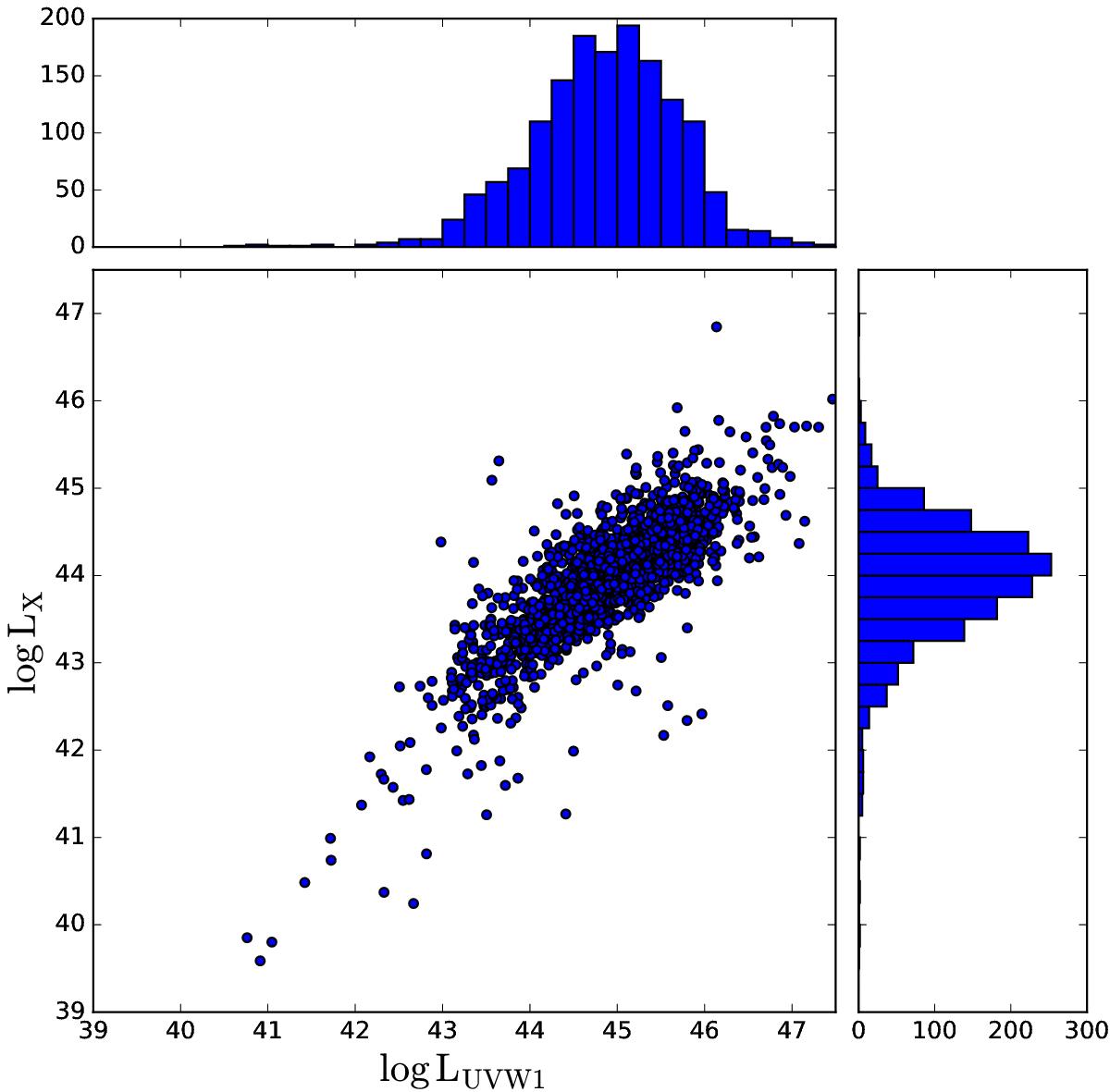AGN spectral states from simultaneous UV and X-ray observations by XMM-Newton
Abstract
Context. It is generally believed that the supermassive black holes in active galactic nuclei (AGN) and stellar-mass black holes in X-ray binaries (XRBs) work in a similar way.
Aims: While XRBs evolve rapidly and several sources have undergone a few complete cycles from quiescence to an outburst and back, most AGN remain in the same state over periods of years and decades, due to their longer characteristic timescale proportional to their size. However, the study of the AGN spectral states is still possible with a large sample of sources. Multi-wavelength observations are needed for this purpose since the AGN thermal disc emission dominates in the ultraviolet energy range, while the up-scattered hot-corona emission is detected in X-rays.
Methods: We compared simultaneous UV and X-ray measurements of AGN obtained by the XMM-Newton satellite. The non-thermal power-law flux was constrained from the 2-12 keV X-ray luminosity, while the thermal disc component was estimated from the UV flux at ≈ 2900 Å. The hardness (defined as a ratio between the X-ray and UV plus X-ray luminosity) and the total luminosity were used to construct the AGN state diagrams. For sources with reliable mass measurements, the Eddington ratio was used instead of the total luminosity.
Results: The state diagrams show that the radio-loud sources have on average higher hardness, due to the lack of the thermal disc emission in the UV band, and have flatter intrinsic X-ray spectra. In contrast, the sources with high luminosity and low hardness are radio-quiet AGN with the UV spectrum consistent with the multi-temperature thermal disc emission. The hardness-Eddington ratio diagram reveals that the average radio-loudness is stronger for low-accreting sources, while it decreases when the accretion rate is close to the Eddington limit.
Conclusions: Our results indicate that the general properties of AGN accretion states are similar to those of XRBs. This suggests that the AGN radio dichotomy of radio-loud and radio-quiet sources can be explained by the evolution of the accretion states.
- Publication:
-
Astronomy and Astrophysics
- Pub Date:
- July 2017
- DOI:
- 10.1051/0004-6361/201630181
- arXiv:
- arXiv:1704.07268
- Bibcode:
- 2017A&A...603A.127S
- Keywords:
-
- black hole physics;
- accretion;
- accretion disks;
- galaxies: nuclei;
- Astrophysics - Astrophysics of Galaxies
- E-Print:
- 13 pages, 12 figures, accepted in A&
